
Pests are a critical threat to the farming business, and integrated pest management helps growers address and mitigate these risks. Integrated pest management utilizes several methods in complex, thus being a more effective solution to the issue. In particular, eliminating aggressive chemical methods allows for minimizing harm to people and the environment by using natural and safer options instead. Switching to integrated pest management, farmers also contribute to sustainable farming.
What Is Integrated Pest Management?
Integrated pest management (IPM) is a fundamental and long-term crop protection approach to prevent and combat pest infestations on agricultural lands.Pests attack plants from everywhere: rodents and nematodes spoil roots in the earth, snails and caterpillars destroy leaves and berries coming from the ground, and birds eat up fruits and seeds attacking from the air. The list won’t be complete without fungi, viruses, and bacteria, to mention a few.
Primarily, the term ‘pests’ relates to insects, but it also applies to any other organisms that harm crops, including birds, animals, weeds, and pathogens that cause plant diseases.
Depending on the target, pesticides fall into herbicides, rodenticides, insecticides, animal repellents, avicides, nematicides, larvicides, bactericides, fungicides, antimicrobial substances, etc.
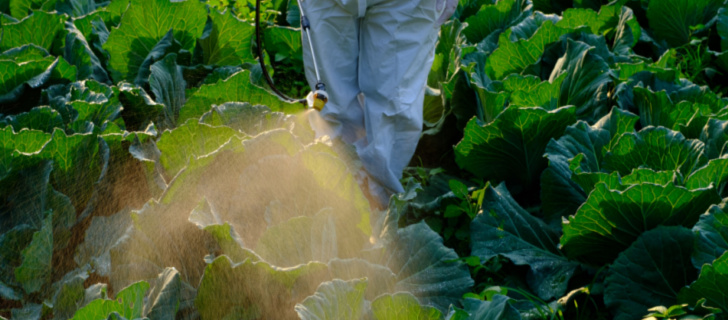
Integrated Pest Management Objectives
Previously, pest management mostly relied on synthetic pesticides. However, chemicals strongly harm people and nature, as well as develop resistance in target organisms. The goal of integrated pest management is to minimize this harm and control acceptable infestation levels rather than eradicate all undesired populations. This is why it is important to understand what measures are justified in each case and use aggressive ones only when other integrated management techniques don’t work.Integrated Pest Management Benefits
Integrated management mitigates the negative consequences of a non-IPM approach, and the main benefits of IPM include the following:- reduction of workers’ exposure to chemicals;
- use of natural management methods with the least harm to the environment;
- minimization of water and air pollution;
- elimination of land contamination, which boosts soil fertility;
- prevention of resistance to chemicals.
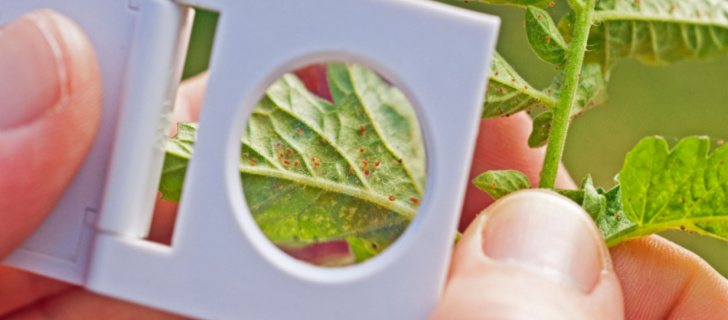
How Does Integrated Pest Management Work?
Despite IPM demands individual solutions in each case, the concept of an integrated pest management program typically covers the following aspects:- Problem assessment is the way to start an IPM program by deciding if the pest presence is dangerous to crops. A correct understanding of the infestation scope determines if the problem should be addressed.
- Pest monitoring and identification are the next components of an IPM program because it is important to realize if the organisms make potential risks and decide on the integrated management options or the specific pesticide use.
- Preventive measures intend to reduce infestations by applying different agronomic techniques. Prevention in integrated pest management may include crop rotation, planting pest-resistant species, or pre-treated seeds.
- Application of the most suitable integrated management methods if prevention was ineffective. Integrated management options in an IPM program start with safer to more aggressive ones. For example, target or broadcast chemical spraying may follow manual removal or trapping that hasn’t helped.
- Monitor your crops regularly.
- Take prevention measures.
- Identify pests timely and assess the risks.
- Decide on the necessity of actions and how IPM will work.
- Consider and apply all appropriate integrated management options.
- Analyze the results.
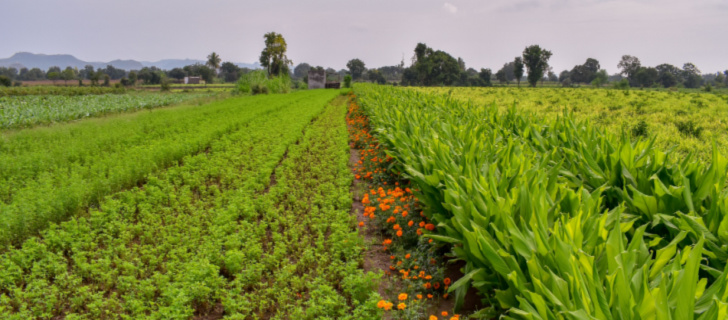
Integrated Pest Management Methods
The very idea of IPM is to use all the available integrated pest management techniques in complex and use strong treatment only when the previous options don’t work.Advanced integrated pest management widely employs innovative solutions. For example, an Israeli company successfully controls Mediterranean fruit flies with sterile insect technology by neutralizing males and then releasing them in nature. Mating with wild fertile females, they produce no vibrant offspring.
EOSDA Crop Monitoring
Fields analytics tool with access to high-resolution satellite images for remote problem areas identification!
REQUEST A DEMO
TRY NOW!
Cultural Integrated Pest Management
Cultural control in integrated management decreases infestations through suitable agronomic practices. Cultural IPM methods are more effective when crops are healthy. This is why regular crop monitoring in integrated management helps address the problem early and mitigate the upcoming negative consequences. Among others, IPM cultural methods include the following field management techniques:- soil treatment;
- selection of suitable plants;
- crop rotation;
- interplanting or strip cropping;
- choice of planting dates;
- weed control;
- use of trap plants.
Soil Treatment
Favorable soil conditions speed up plant growth, and vigorous crops are more resistant to infestations. In integrated pest management, soil testing helps understand if the field is suitable for the production of this or that crop, and then apply the lacking nutrients to ensure plant healthy growth. Adding organic matter and mulching encourages soil organisms’ activity and boosts nutrient release. No-till practices help prevent soil erosion, contributing to sustainable farming. However, when tilling is necessary, it is recommended to conduct it in the fall to expose them to natural enemies and severe weather.Selection Of Suitable Plants
Healthy seedlings and seeds predetermine successful crop development, so it is important to choose pest-free planting material with strong roots. Certified seeds, visual inspection, and pre-sowing seed treatment help avoid the problem in the future. As part of an integrated pest management program, planting resistant or tolerant cultivars helps farmers to reduce yield losses. For example, a study attests to the resistance of White Satin F1, Samba F1, Afro F1, Nipomo F1, and Yellowstone cultivars to the hawthorn-carrot aphid. Stronger cultivars are bred traditionally or through genetic engineering.Crop Rotation
Non-host crop sequences are not suitable for specific pest species. For example, rodents reduce grain yields, while birds and snails damage strawberries. If the habitat is not suitable and there are no required crops, pests will leave for more lucrative places. Thus, among other applications, crop rotation can be effectively used as an integrated pest management method.Interplanting Or Strip Cropping
Pests spread slower if rows of different crop types separate their host plants in intercropping or strip cropping, which is also used in the integrated pest management system. Conversely, infestations increase when plants of the same crop type or family grow together. Thus, cabbage pests may migrate to mustard, broccoli, and other brassicas, while potato beetles attack potatoes, tomatoes, and eggplants.Use Of Trap Plants
Planting trap plants in patches is another option for IPM intercropping. This integrated pest management method suggests attracting pests to specific plants and then controlling them with chemical or mechanical techniques. In particular, soybeans are known as trap crops for Japanese beetles. Radishes are also attractive for cabbage root maggots.Choice Of Planting Dates
In integrated pest management, favorable dates for sowing or planting make the crops the least subjected to pests or already strong enough to withstand infestations. For example, it is better to sow squash early (provided the soil temperature is warm enough) so that it can mature before pickleworm returns from the southern areas. At the same time, too early plantings may result in root rots due to excessive soil moisture after winter.Weed Management
Weeds don’t only reduce crops’ access to nutrients but hamper their healthy development making them vulnerable to infestations. Furthermore, undesired vegetation may host pests. This is why weed control methods of IPM play a significant role in the integrated approach.Nonetheless, flowering weeds can attract pollinators and other beneficial insects, so cutting them just after blooming but prior to seed formation will increase yields and prevent new generations of weeds.
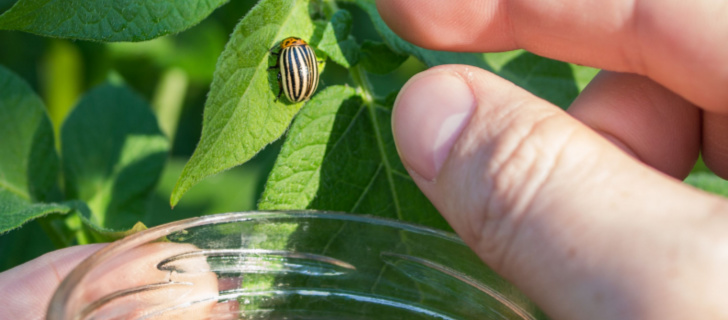
Mechanical / Physical Integrated Pest Management
Integrated mechanical and physical controls imply either removing or killing pests with designated devices or manually, or blocking their access to plants. Using traps or steaming/heating soils belong to the mechanical IPM control. Barriers are typical examples of physical IPM methods. Let’s take a closer look at them.Handpicking
Removing or picking pests out manually is a time and labor-consuming option that is widely applied in integrated management and organic farming. Mature insects or their eggs and larvae are collected by hand and destroyed.Traps
Trapping is a common mechanical IPM method to isolate harmful organisms. There exist different types of electric or mechanical traps that attract pests with light or fire, collect them through air suction, or repel them with electricity or sound.Barriers
Constructing screens for birds and insects or building fences around fields to protect them from wildlife can bring fruitful results but at times they are not applicable. For example, even the highest fence in Australia would not stop kangaroos capable of jumping three meters high. Barriers will be of no use, and the case will demand another integrated management solution.Pruning And Raking
In integrated management practices, cutting infested plant parts can be effective when the damage is irreparable or crop disease has no treatment. Raking helps manage infestations mechanically or move them to the earth’s surface to be destroyed by predators (e.g., birds).Irrigation Management
Proper irrigation management supports plant needs for healthy development and helps control pests. For example, pesticides in integrated management solutions can be administered through foliar spraying and sprinkling, or drip irrigation. However, the impact of irrigation management on IPM has both positive and negative sides.Flood irrigation reduces the numbers of ground squirrels or gophers; yet excessive soil moisture is beneficial for nematodes, and continuous waterlogging induces fungi-caused root rots.
Heat/Steam Treatment
Heating or steaming soils is an efficient integrated management technique to defeat pests, their eggs and larvae, pathogens, and weed seeds at high temperatures. Steaming and heating also disinfect composts, organic matter, or agronomic tools. This option in mechanical integrated pest management occurs through burning fuels to produce water steam to treat the soil. Soil heating can be performed through pasteurization (160-182°F) or sterilization (212°F) for 30 minutes.Soil solarization is an effective integrated management technique to disinfect the field by heating it in a natural way.
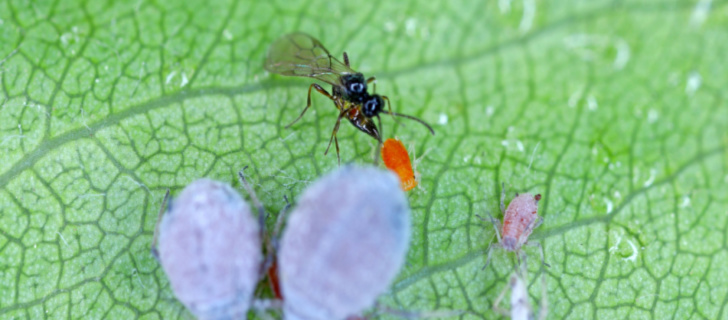
Biological Control In Integrated Pest Management
This integrated management method implies a common way of destroying pests by predators, parasitoids, pathogens, and other biological control agents (aka antagonistic organisms). The role of biological control in IPM is to cause a minimum imbalance in ecosystems by mimicking nature. Biocontrol in integrated management is similar to natural processes, yet natural control occurs without human intervention.Use Of Predators
Predators eat up their prey that damages crops, for example, ladybugs reduce aphid numbers. Predators’ populations for integrated management are boosted in their primary habitat or imported from other regions. However, when increasing predators’ numbers in integrated pest management, there are several aspects to consider:- ‘foreign’ predators may not cope with the task;
- reduction of certain species may give rise to secondary pest invasions;
- introduced animals become pests themselves with time if there are no natural enemies to control their population in the new environment.
Use Of Parasitoids
Parasitoids develop on or within their hosts to eventually kill them after maturing. Typical examples of parasitoids are most wasps or flies. Applying this integrated pest management technique, it is important to remember that parasitoids are also subject to hyperparasitoids’ attacks. A study reports a 20% of hyperparasitism rate for cereal aphids in Canadian wheat fields.Use Of Pathogens
Pathogenic microorganisms are viruses, bacteria, and fungi that infect pests and cause diseases reducing their numbers, which are also used in the integrated pest management system. For example, wild rabbits’ numbers significantly decreased after infections with the myxomatosis virus borne by mosquitoes. In the regions with a lack of mosquitoes, the idea was implemented with a flea-borne virus.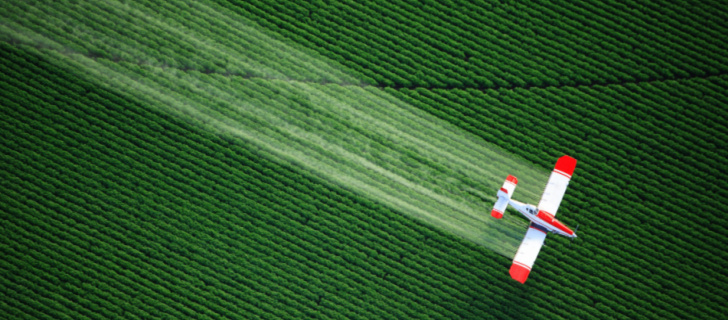
Chemical Integrated Pest Management
This group of the integrated approach applies natural or synthetic chemical substances to repel or eradicate pests. Biopesticides are natural repellents containing plant extracts or oils, which is the safest option for humans, animals, and crops.Does integrated pest management use pesticides? Yes, but as a last-call action in the integrated approach that must be used with great caution because pesticides can develop resistance. Synthetic substances are applied only when integrated pest management without chemicals can’t efficiently combat the invasion or when other options are impossible due to certain circumstances.
Satellite Technologies For The Integrated Pest Management System
Field monitoring is a daily task that requires a lot of time, yet with satellite technologies, you can monitor crops remotely. EOSDA Crop Monitoring is a digital platform that grants an opportunity to check any farm field on a daily basis regardless of its size or location. Just log in, select the field, and get all the available information.What Is Scouting In Integrated Pest Management?
Scouting implies regular field inspection for deviations in crop development and promotes grounded decisions. When applying integrated pest management, growers need to know about the pest threats on the fields every season and in the long run, and timely scouting helps detect the problem early and save yields.EOSDA Crop Monitoring provides a valuable scouting feature allowing you to:
- effectively detect vegetation decline in the field;
- set scouting tasks to check a specific area using GPS coordinates;
- assign a task to anyone from your team;
- get a comprehensive report with inspection details, including attached photos of the specified area.
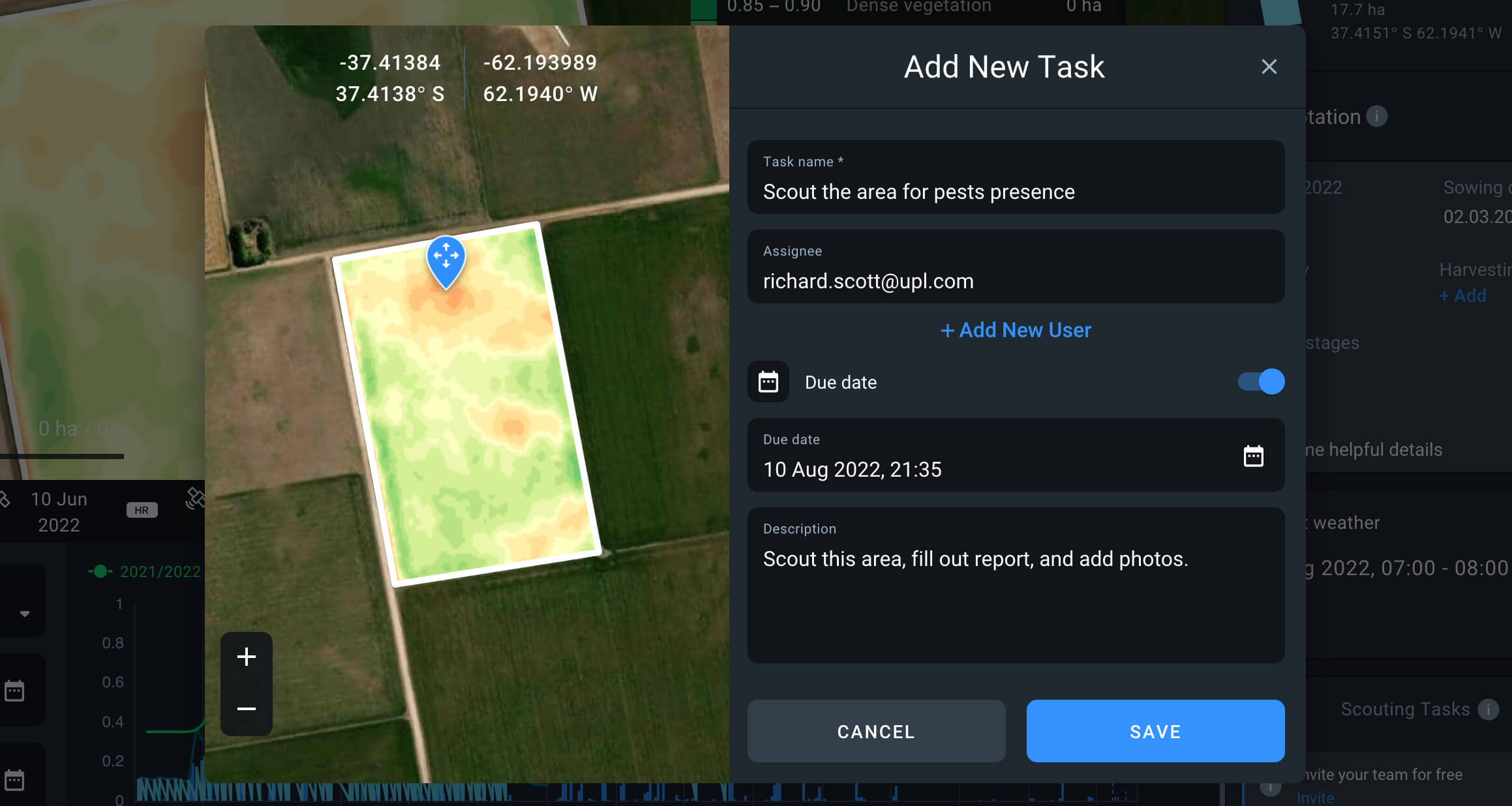
Plan And Monitor Integrated Control Strategies
What’s more, EOSDA Crop Monitoring enables convenient planning and controlling of any IPM agricultural activities on every individual field. Just select the activity type, set the timeline, and monitor its status. Regular scouting can also show if the used integrated pest management practices bring the desired results.Through a number of vegetation indices, you can monitor the crop’s state in the field and detect changes. If the problem areas do not recover after the applied components of integrated pest management, it means that pest populations are likely to increase. That’s a clear sign of the chosen strategy’s failure, and there is a necessity to consider another integrated management option.
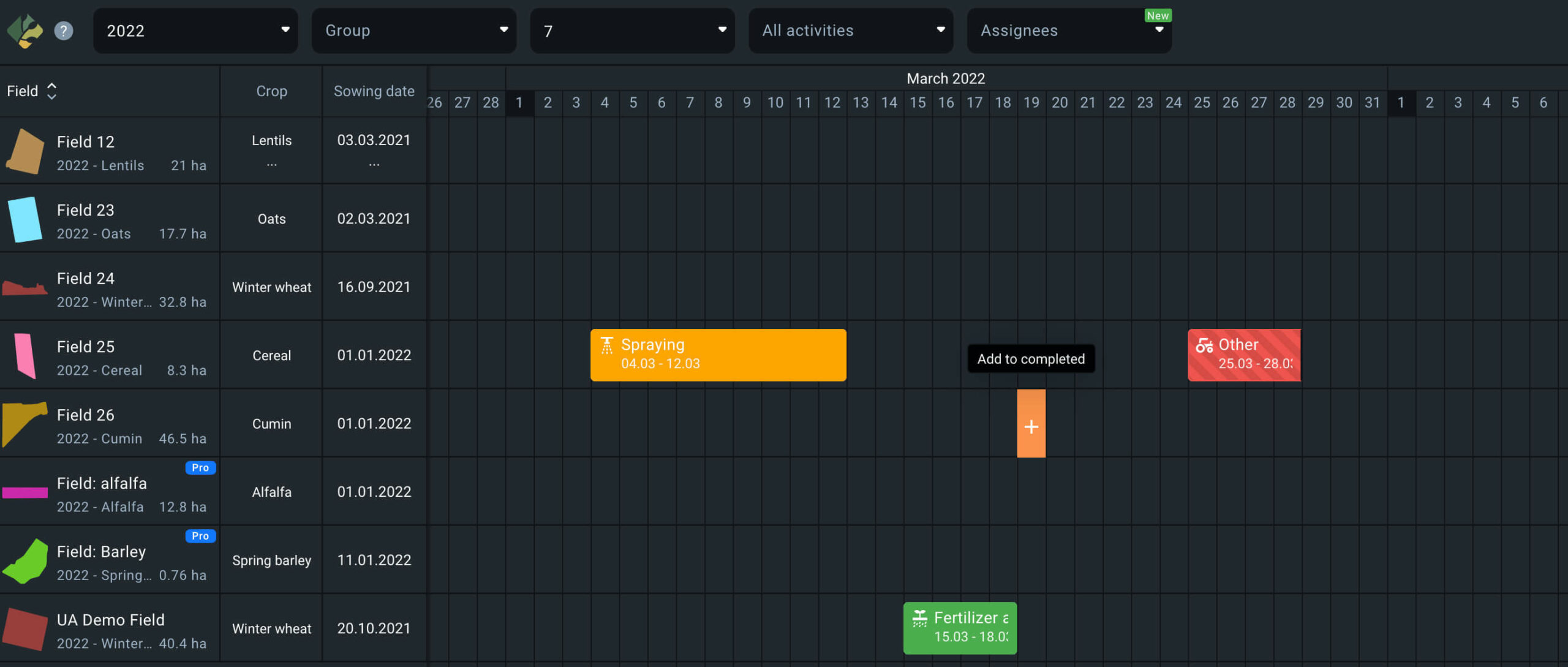
Integrate Remote Sensing Into Current Business Processes
A before-after comparison is an ideal solution for agricultural input suppliers who are constantly testing their products. Using EOSDA Crop Monitoring index maps in the Split View mode, you can easily compare a single field change over two dates. It helps confirm the beneficial effects of fertilizers or any other IPM (integrated pest management) agrichemicals (insecticides, herbicides, fungicides, etc.).At the same time, if agrichemical doesn’t prove useful, there will be no signs of improvements on vegetation index maps. That’s a call for further improvements of the product applied before bringing it to the agri-market. Moreover, using EOSDA Crop Monitoring vegetation indices, input suppliers can provide the target audience with strong show-cases that visually attest to the effectiveness of a certain product based on satellite-derived data.
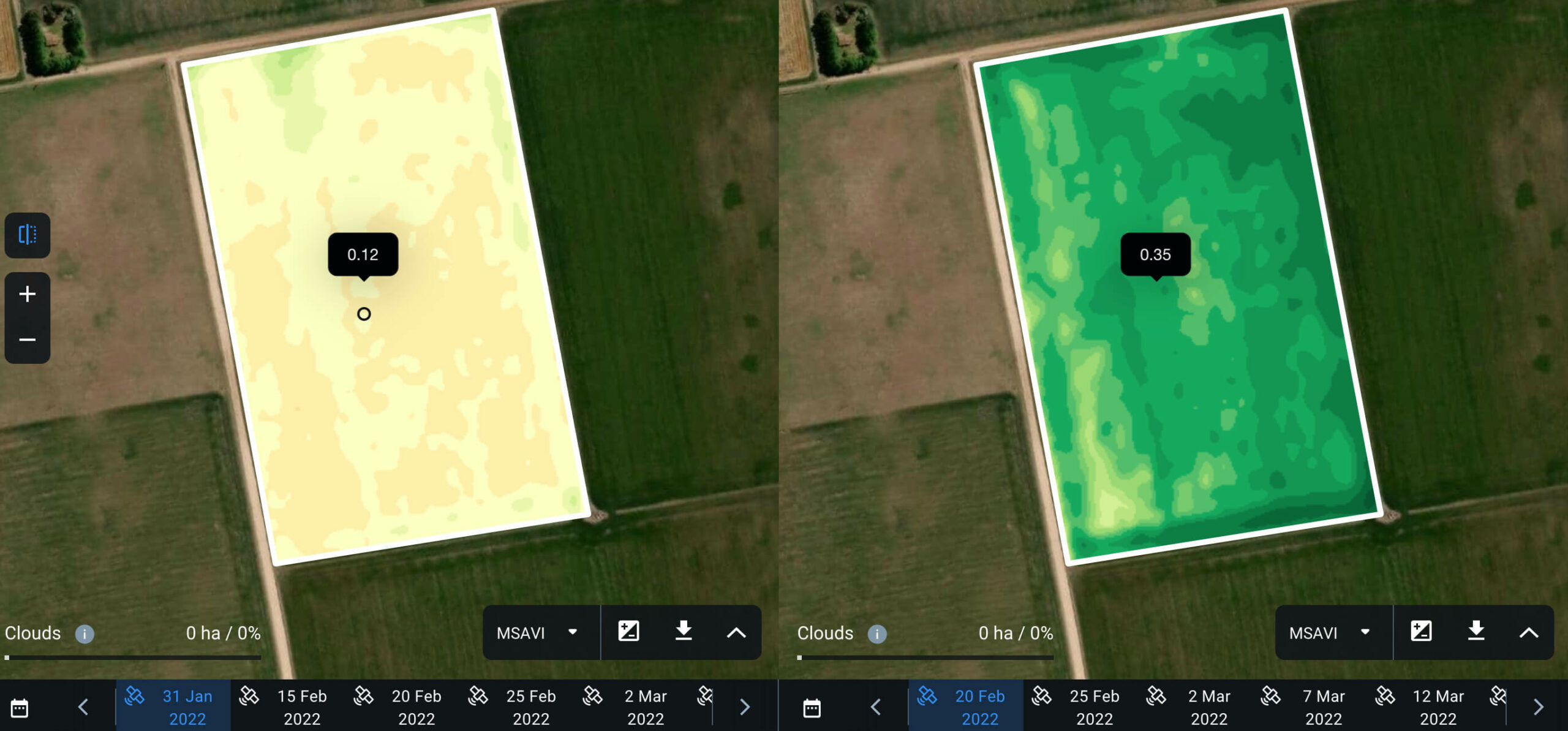
For more information on EOSDA Crop Monitoring functionality, contact our sales department at [email protected]. Our experts will answer all your questions and provide a visualization of the platform’s functions.
EOSDA is about to launch its own agricultural satellite constellation EOS SAT to Low Earth Orbit. Thanks to the imagery retrieved, our clients and partners will get even more precise satellite data to meet their current needs in precision agriculture. Among other benefits, EOS SAT will also promote more effective integrated pest management in sustainable farming based on satellite imagery, AI algorithms, historical field productivity data, weather analytics, and more.





